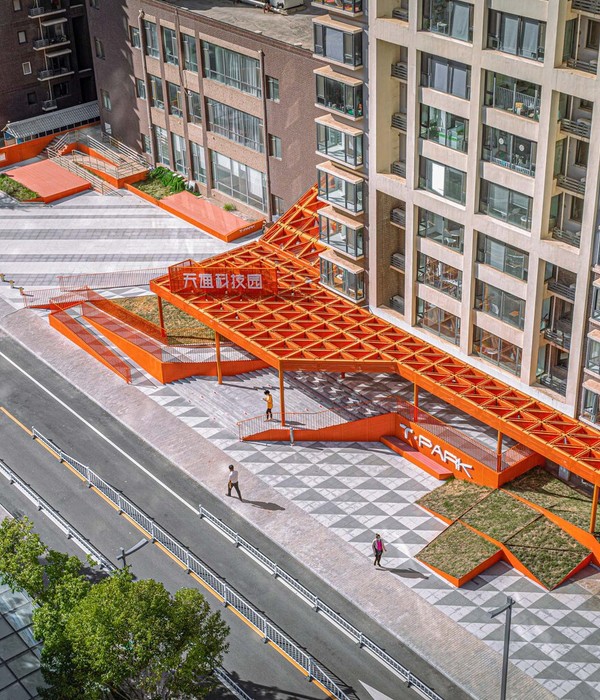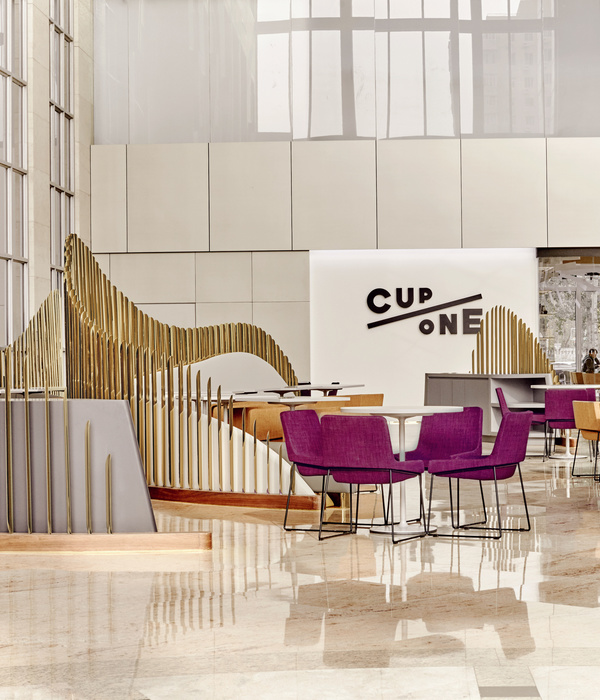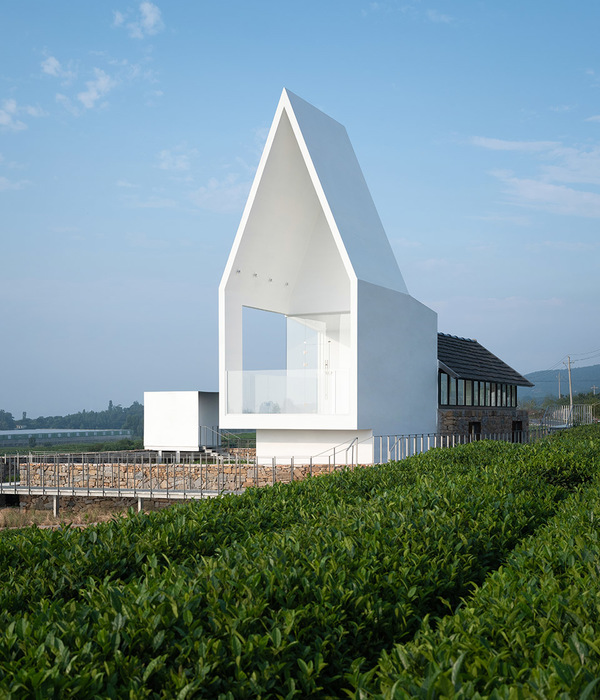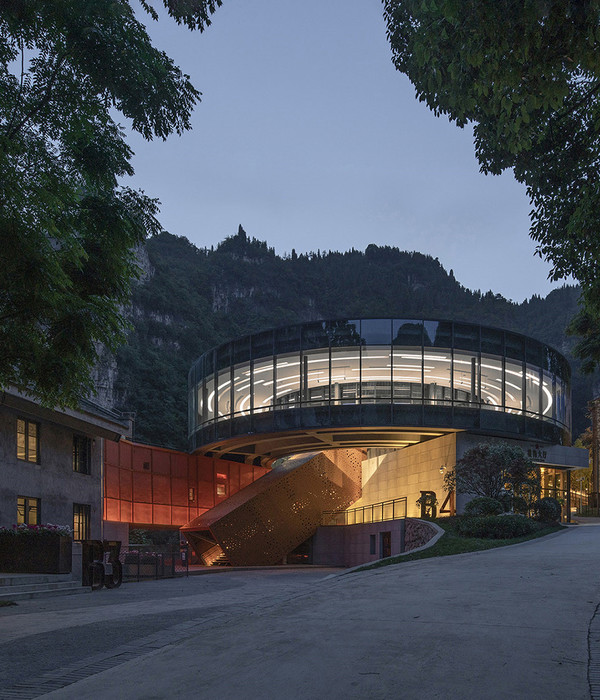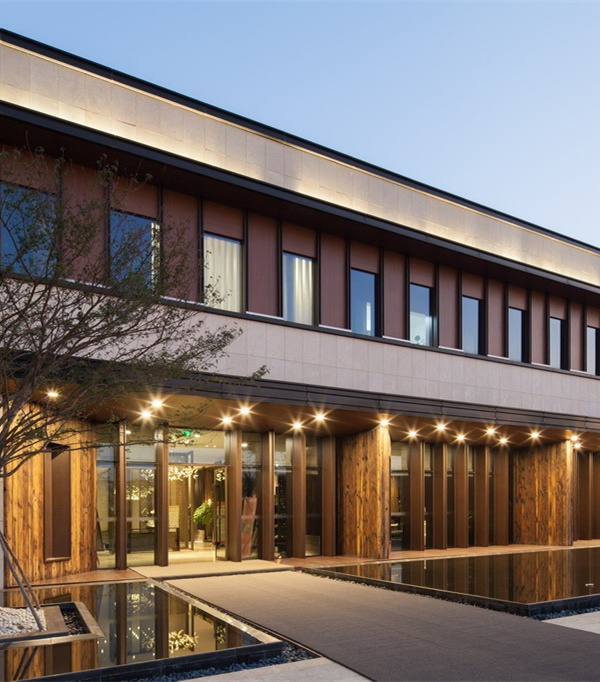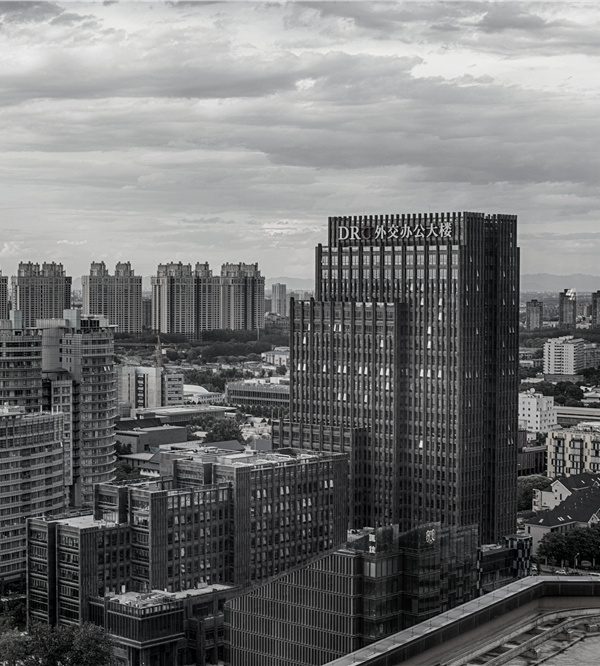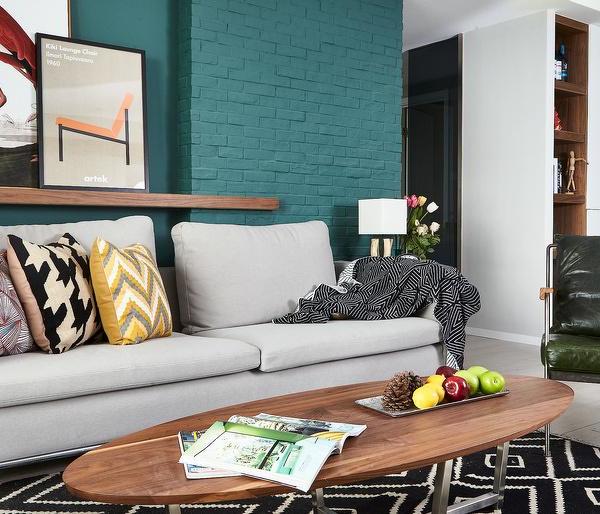宁波茶亭·自由之滨 | 山地小镇的湖景商业与办公空间
- 项目名称:茶亭·自由之滨
- 设计方:c+d 设计中心
- 主持建筑师:董屹
- 项目主创:王斌
- 设计团队:魏烯醇 高阳 张小翼 黄俊瑜
- 项目地址:浙江省宁波市鄞州区东钱湖环湖南路666号
- 建筑面积:50826.5 ㎡
- 摄影版权:王骁,董屹,刘洋
- 客户:宁波东钱湖旅游度假区韩岭古村开发有限公司
茶亭,原为村地古名,沿用至今。地处宁波东钱湖西南的山坡之上,向东俯瞰钱湖,目之所及,湖天一色,群峦尽收。
Chating, the ancient name of the village, is used to this day. It is located on a hill to the southwest of Ningbo Dongqian Lake, overlooking Qian Lake to the east, what in your sight are only the stretching mountains, with the lake and the sky merging in one color.
项目为商办用地,位于东钱湖南岸线区域,环湖南路南侧,现状山体福泉山的东侧,周边多为居住用地。地块形状狭长,地势复杂,从环湖南路向西迅速抬升,而后向南转折,缓缓蜿蜒上行。场地西南侧的现有道路,和场地东北角相邻的城市道路之间的高差达到了32m,和东侧相邻已建小区地面高差达18m。为了打造特别的场所体验,如何组织和利用场地竖向关系,如何建立一种整体的湖山联系,成为了设计理所当然的切入点。
The project site is located in the south shoreline area of Dongqian Lake, and is of commercial & office land use. It is on the south of South Huanhu Road, east of the Fuquan Mountain, and mostly surrounded by residential areas. The shape of the site is long and narrow, and the terrain condition is rather complicated, rising rapidly from South Huanhu Road to the west, then turning to the southside, gently winding upwards. The elevation difference between the existing road on the southwest side of the site and the adjacent road on the northeast of the site is 32 meters, while the number rises to 18 meters when compared with the ground level of the residential area on the east side. To create a special experience of the place, how to form and utilize the vertical context of the site, and further connect the lake and the mountains as a whole, undoubtedly became the breakthrough point of the design.
夜景鸟瞰,aerial view at night
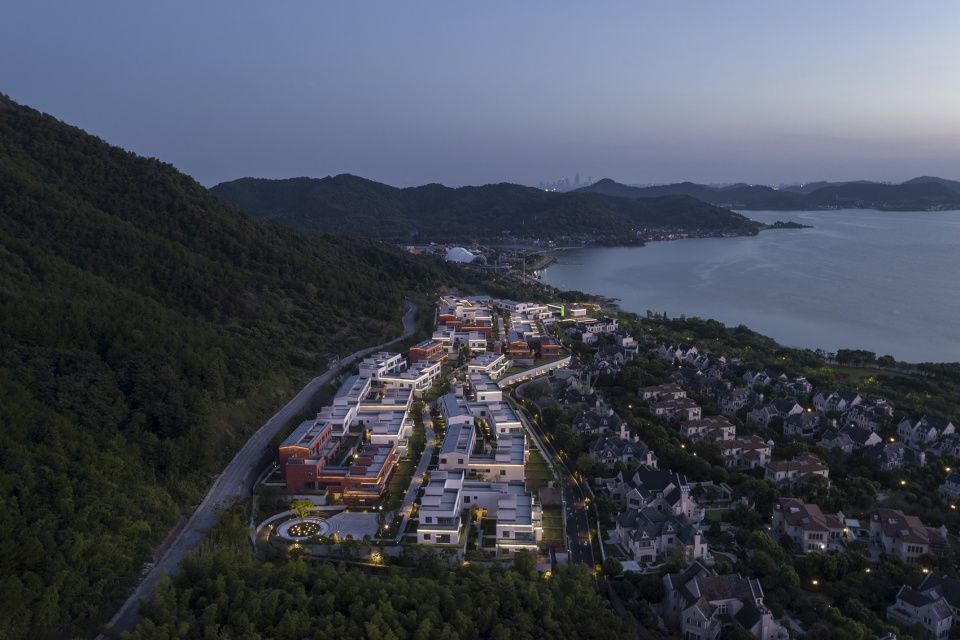
▼场地竖向关系,vertical context of the site
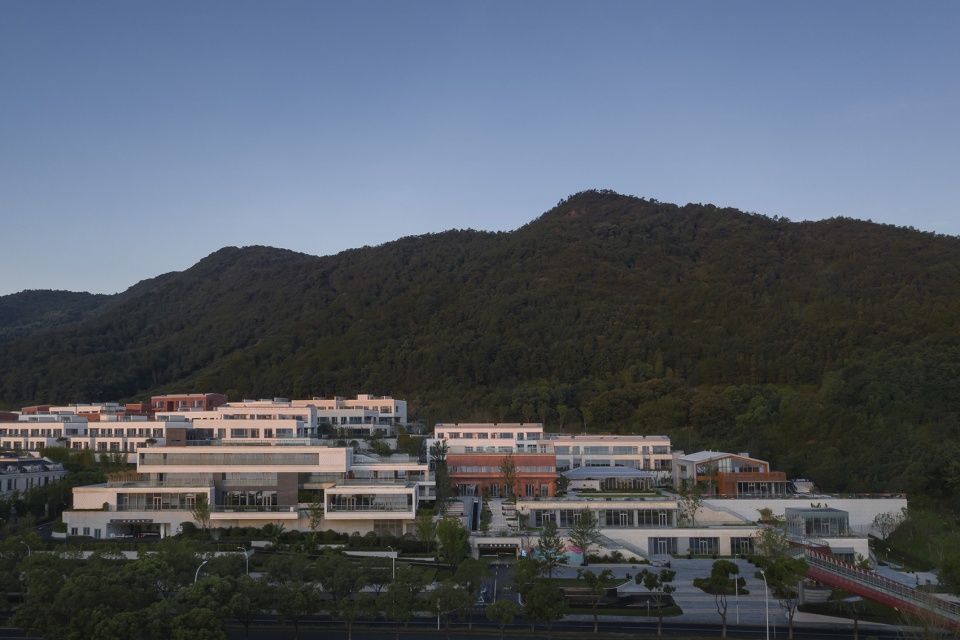
▼项目整体的湖山联系,further connect the lake and the mountains as a whole
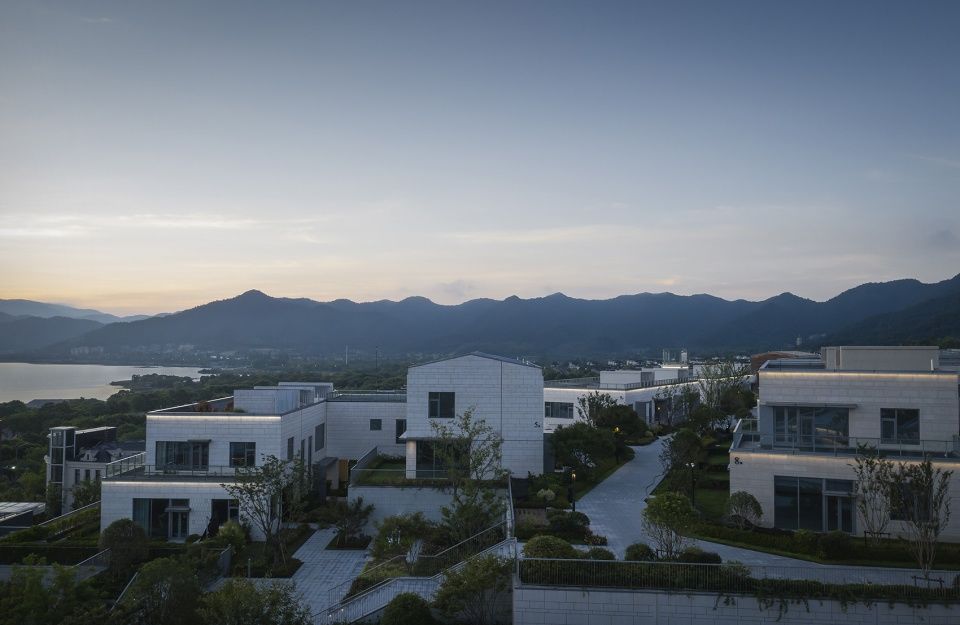
【一市三村】以山地聚落重塑为目标的场景营造
One Town with Three Villages: Place Making for Reshaping Mountainous Settlements
不同于城市片段中空间集约、人员密集的办公、商业环境,在自然资源如此丰厚的基地内,我们想创造一种接近于度假体验的商业与办公氛围,让项目所在的山水自然环境与人为雕琢的建筑空间充分渗透,满足使用者对所谓山地小镇的期待。为此我们利用一条蜿蜒起伏的“山线”将场地内部划分为四个不同的聚落,同时由一条平缓的“村线”将四个聚落串联起来。根据各聚落和城市的关系以及自身的功能定位,四个聚落形成了“一市三村”的规划结构。
▼村线-山线(流线),analysis of circulation
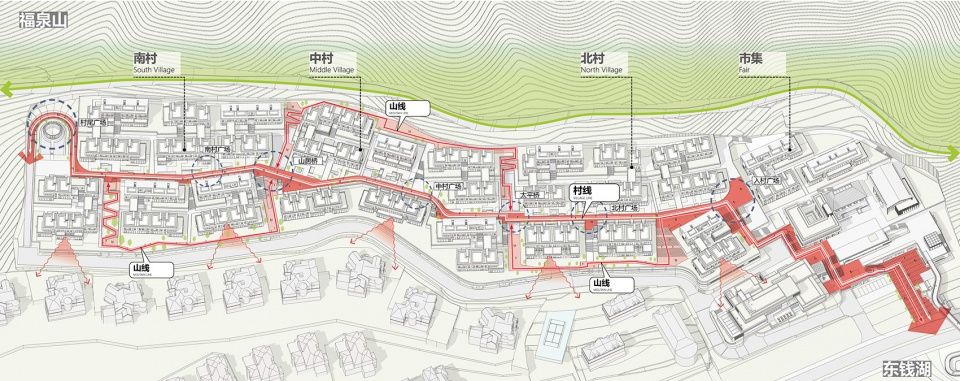
▼模型,model
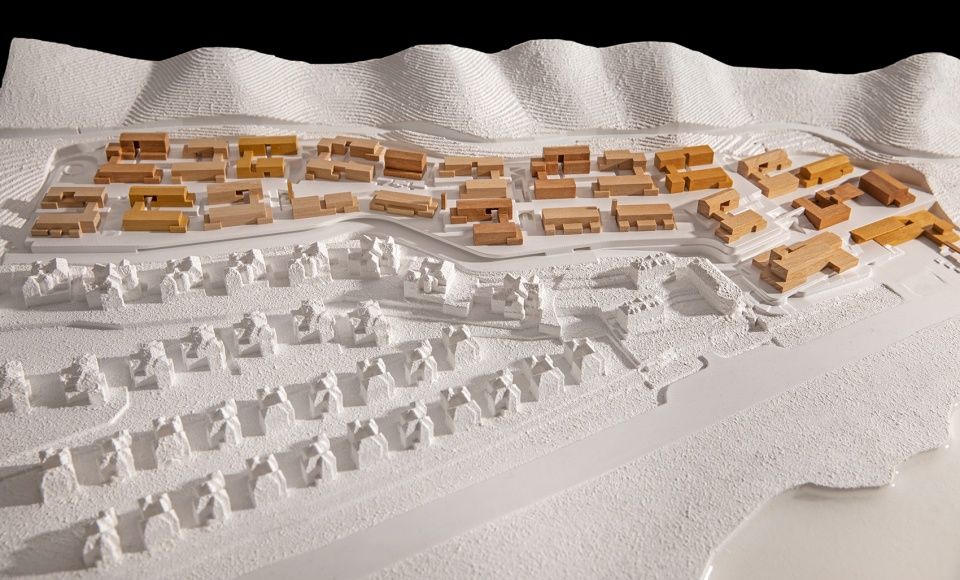
Unlike the spatially intensive and densely populated office and commercial built-environment in urban areas, we aimed to create atmosphere like a resort in our site, which featured rich natural resources, allowing the full penetration between the natural environment of the lake-mountain landscape and the man-made architectural space and meet the users’ expectations of a so-called mountain town. For this purpose, we dedicated a winding “mountain track” to divide the site into four different settlements, while a gentle “village track” connects the four settlements. According to the relationship between each settlement and the city and functional positioning, the four settlements together form a spatial structure of “one town with three villages”.
整体鸟瞰,aerial view of the project
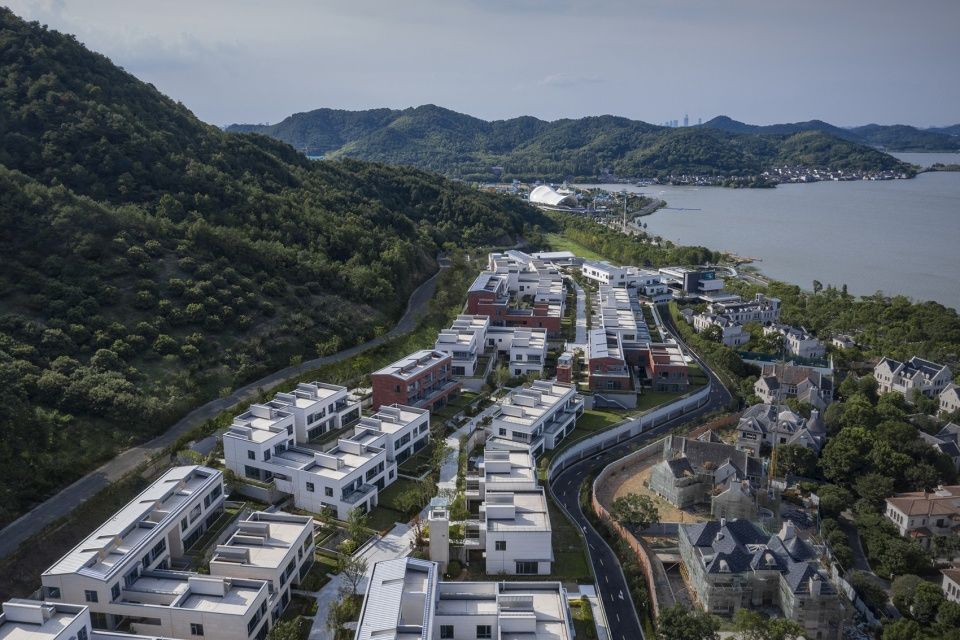
顺应地形关系,狭长的场地被划分四个标高,结合西侧的建成道路和东侧的已建小区,形成连续的、跌落的台地关系,既顺应了山势地形又最大化的利用了湖景资源,而后在场地东北区的茶亭市集,以更大的高差跌落,打造立体化的湖景商业组团,消解高差的同时和环湖南路对接。小镇内由此形成的各种山地建筑和景观的空间体验,也成为了设计最核心的特点。
In response to the topography, the long and narrow site is divided into four elevation zones, integrating the existing road on the west side and the existing residential area on the east side, to form a sequence of continuous, falling terraces, which both responds to the mountainous terrain but also maximizes the utilization of lake-view resources. For the Chating marketplace in the northeast part of the site, a larger elevation difference falls to create a three-dimensional lake-view commercial complex, eliminating the elevation difference while docking with the South Huanhu Road. Accordingly, various mountainous buildings and landscape experience within the town has also become the core character of the design.
▼近景鸟瞰,closer aerial view
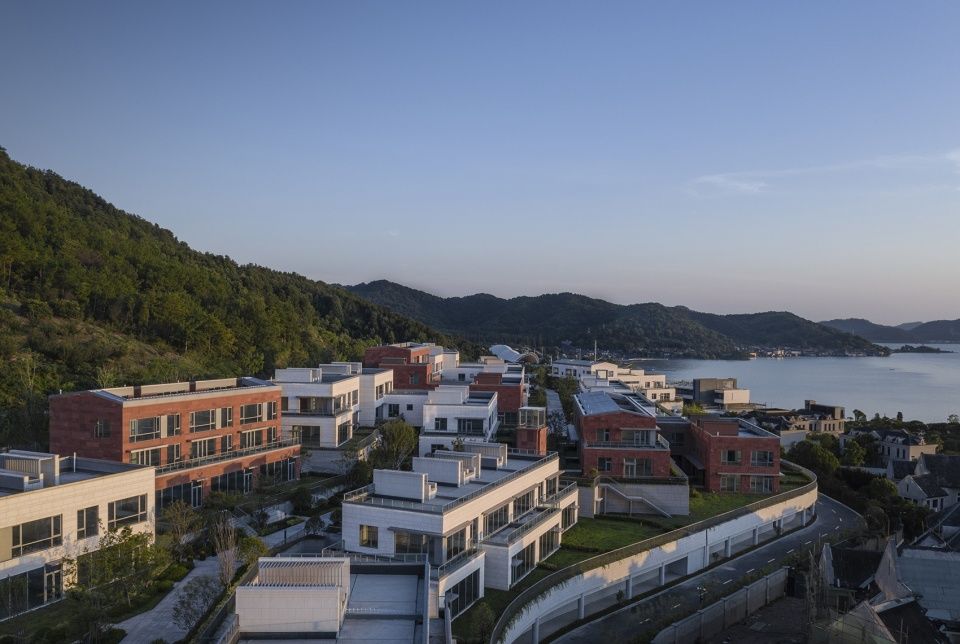
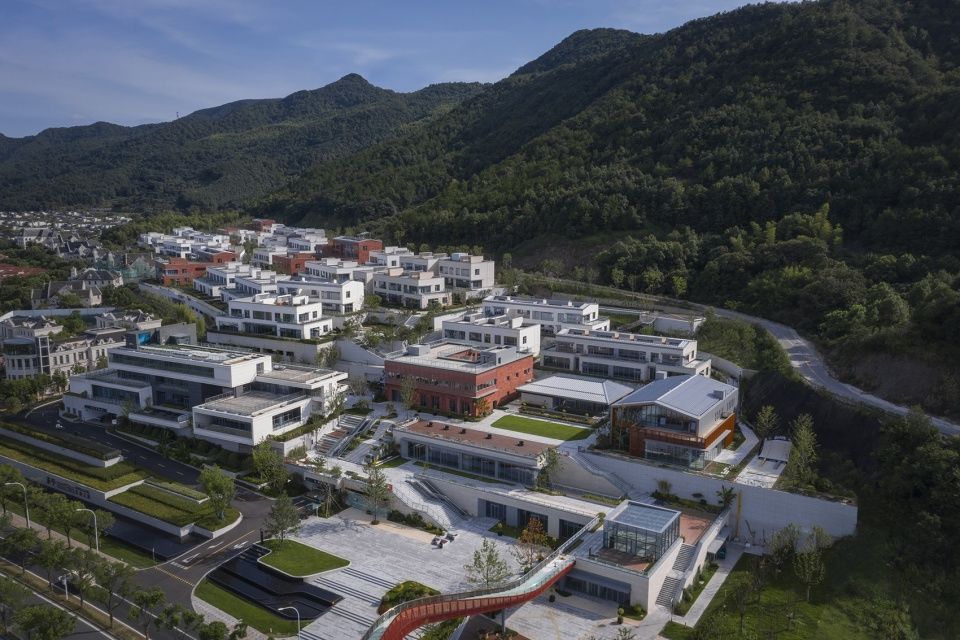
茶亭市集作为这个山地小镇的入口,和环湖南路相接,由低至高设计了三个台地,曲折向上攀升;低区的建筑半围合形成小型商业广场,同时建筑屋面又结合地形形成高区活动场地,层层叠落。建筑均以半围合的建筑体量来打造广场的商业氛围,又朝湖开放,以求最大化的利用湖景资源,让后续入驻的酒店或者餐厅都可以享有最佳的景观视野。
As the entrance to this mountain town, Chating Market is connected to the South Huanhu Road, and three terraces are designed from lower area to highlands, climbing upwards in a zigzag pattern; the buildings in the low area are semi-enclosed to form a small commercial plaza, while the roofs of the buildings could be integrated to the terrain to form an activity site for highland area, with layers of stacking. The semi-enclosed architecture form creates vibrant commercial atmosphere of the plaza, and face the lake to maximize the utilization of the excellent view, to ensure that the subsequent hotels or restaurants could enjoy the best view.
▼茶亭市集鸟瞰,aerial view of Chating Market

▼由商业广场看湖面,overlooking the lake from the view of the commercial plaza
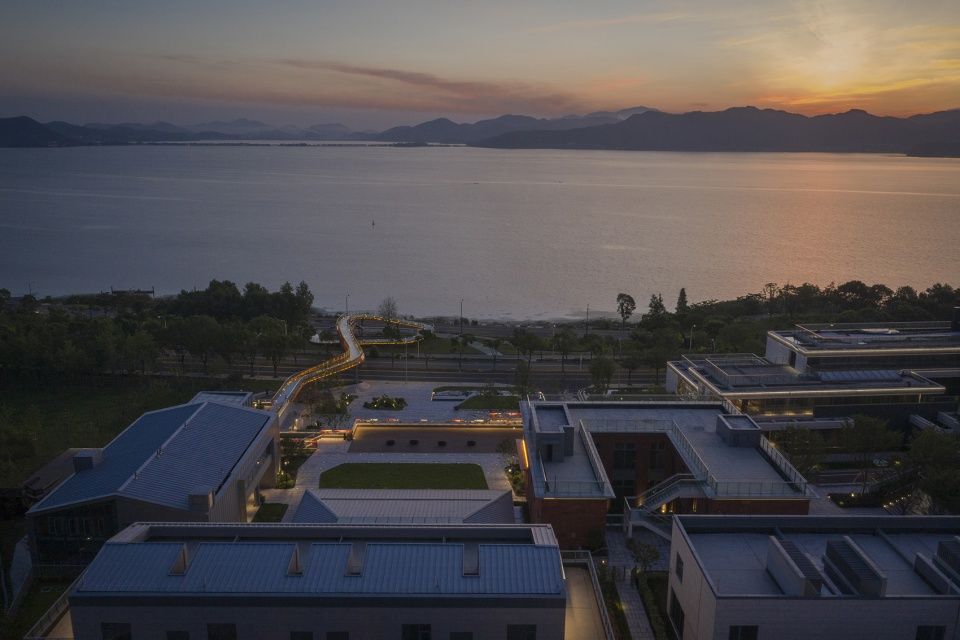
观湖平台,exterior terrace

“三村”中各村的基本组成是由数个产品单元拼接而成的花园组团,根据其相对“村线”的高差关系和进入方式,分为“上山组团”和“下山组团”。相对小镇内部最为公共的“两线”空间,组团内由5-8户围合形成了组团内部共享的“次公共”花园,再经由各户独享的私密花园进入到建筑内部,打造从“公共”到“私密”的逐级过渡的空间体验链。
The basic unit of each village in the “Three Villages” is called garden neighborhood, which is made up of several residential products. We name them with “Upper Hill Neighborhood” and “Lower Hill Neighborhood” according to their elevation compared with the “village track” and the way of access. and “downhill groups”. In contrast to the most public place of the town, which are the “two tracks”, we have the “sub-public” garden in the garden neighborhoods, surrounded by 5-8 households, and then there’re private gardens exclusively for each household for residents to access their own house. Therefore, a “public to private” experience sequence is created.
▼三个台地,曲折向上攀升,three terraces are designed from lower area to highlands
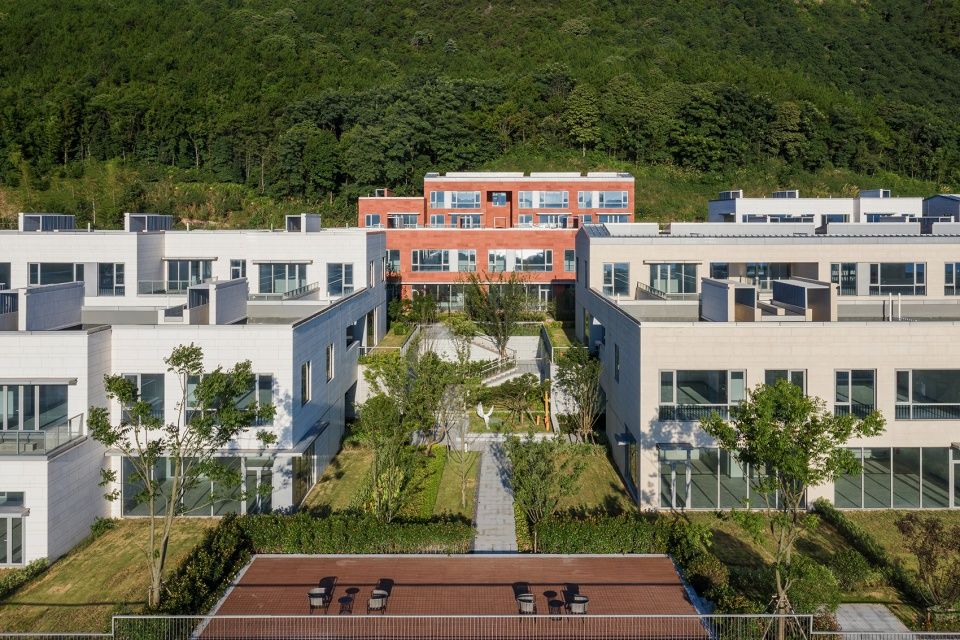

各个组团内建筑体量形成“U”字形围合关系,顺应地势,后排单元比前排高约4m,以确保每个单元都有湖景视野;后排单元的地下一层结合组团花园设有组团共享的公共服务空间,也为组团花园创造了活泼生动的空间氛围;层次丰富的组团建筑形态形成了多层级的露台关系,和山地地形带来的台地形态相呼应,同时相邻组团之间也在不同层面将庭院打通,起承转合,层层递进,空间具有极强的进深感。建筑在这里成为场地的一部分,一同融入这山水之间。
The building massing in each neighborhood forms a “U” shape enclosure, in accordance with the topography, the rear buildings are about 4 meters higher than the front row buildings to ensure that each unit has great lake view; the basement floor of the rear buildings are integrated to the sharing garden of the neighborhood to create public space with amenities, which contributes to the lively and vivid spatial atmosphere for the neighborhood garden; the layered buildings with in the neighborhoods form multi-level terraces, echoing the terraces brought about by the mountainous terrain, meanwhile, the courtyards in adjacent neighborhoods are opened up and merged together at different levels, with a strong sense of depth. The architecture becomes a part of the site and is integrated into the landscape together.
▼层次丰富的组团建筑形态形成了多层级的露台关系,the layered buildings with in the neighborhoods form multi-level terraces
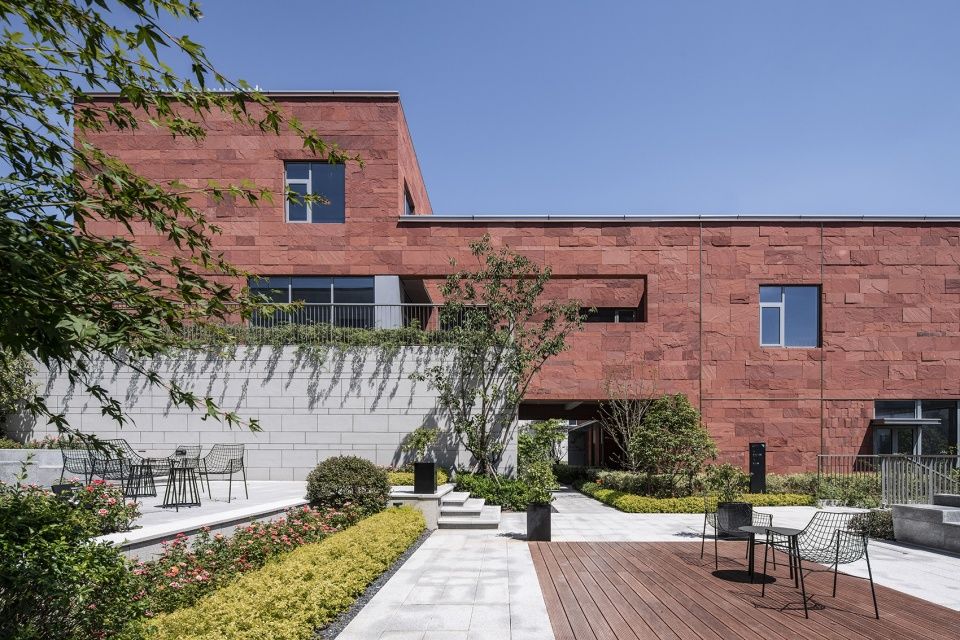
▼相邻组团之间也在不同层面将庭院打通,the courtyards in adjacent neighborhoods are opened up and merged together at different levels
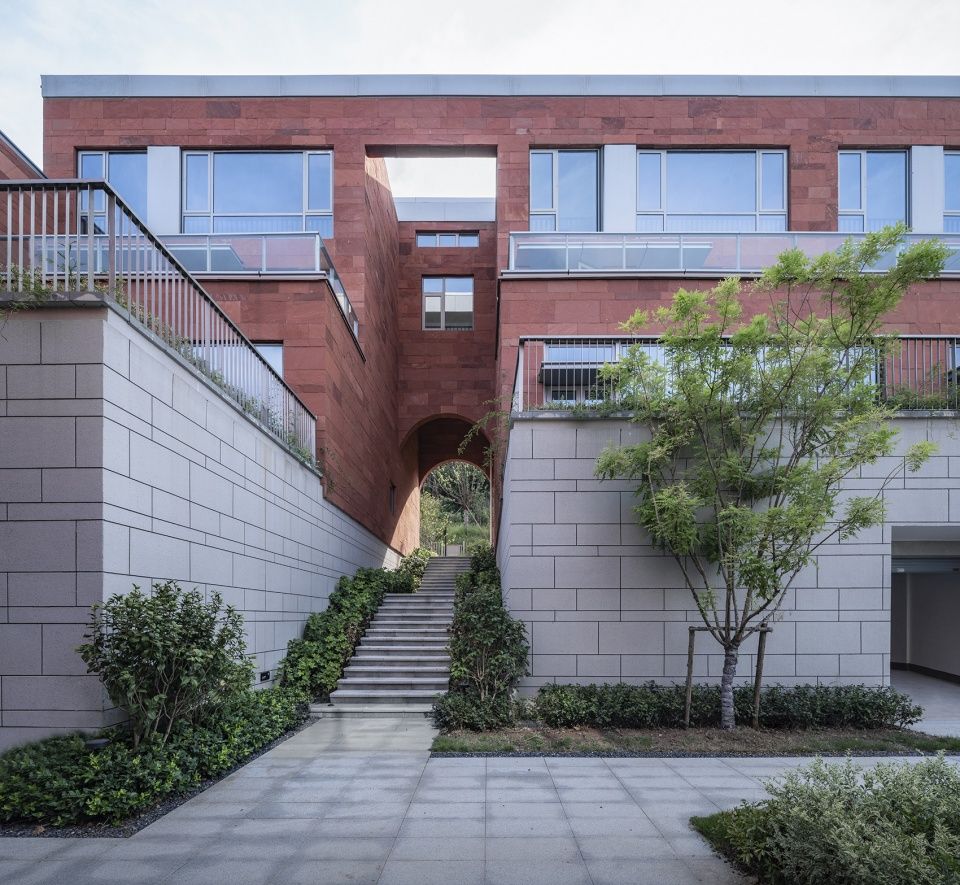
▼花园内部组团,courtyard inside the block
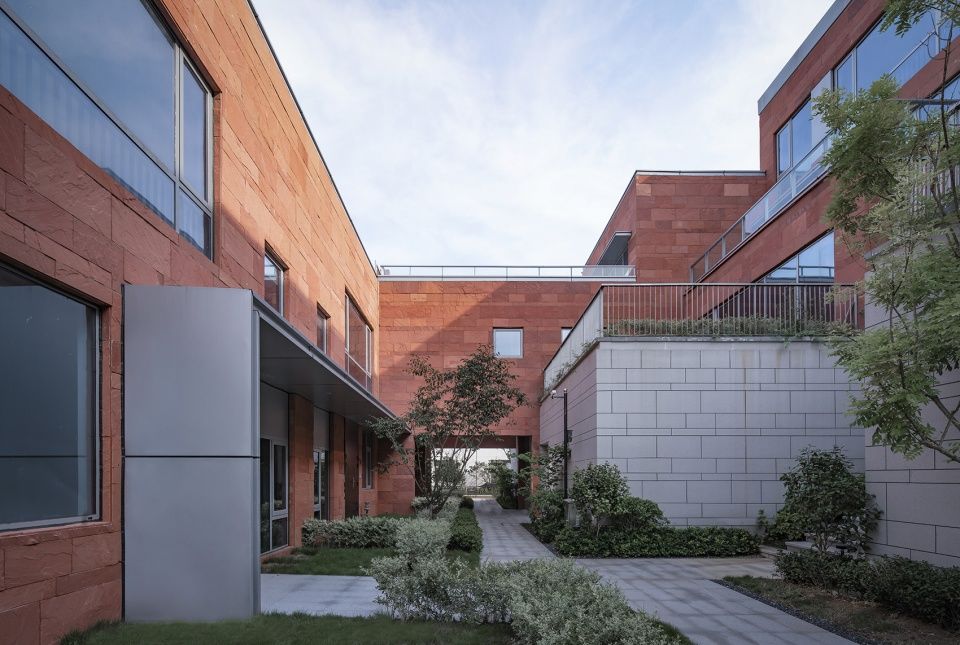
▼空间具有极强的进深感,the strong sense of depth
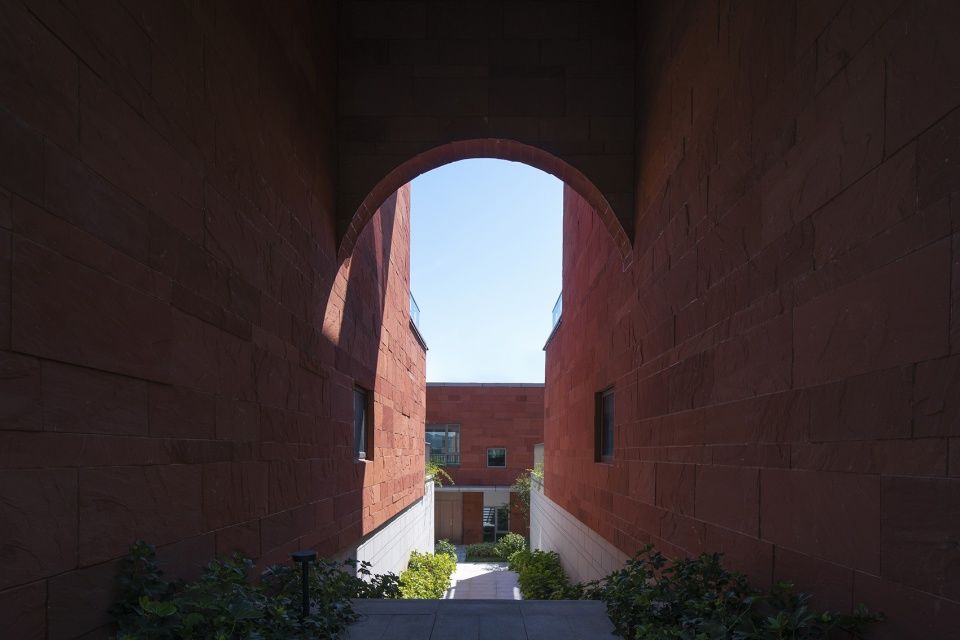
建筑主要材质为石材一体板,外立面石材的纹理和质感与此间自然环境的背景更为融洽。以组团为基础的色彩单元,精致的米白色和稳重的淡黄色穿插,同时以村为单位点缀粗粝的红色砂岩组团,增强可识别性。同时为山林中的小镇增添一抹亮色,让这个湖畔的山地聚落在望湖观山的同时,也成为风景本身。
Stone integrated panel is the main building material. The texture and quality of this stone facade are more harmonious with surrounding nature environment as background. Color based on units are interspersed with delicate creamy white and stable light yellow. Villages groups are also decorated with coarse red sandstone which improve identifiability. At the same time, the colors adds a shiny light to this small mountain town, making the lakeside village become the scenery itself while people enjoy the impressive scenery of mountain and lake.
▼外立面石材,Stone integrated panel is the main building material
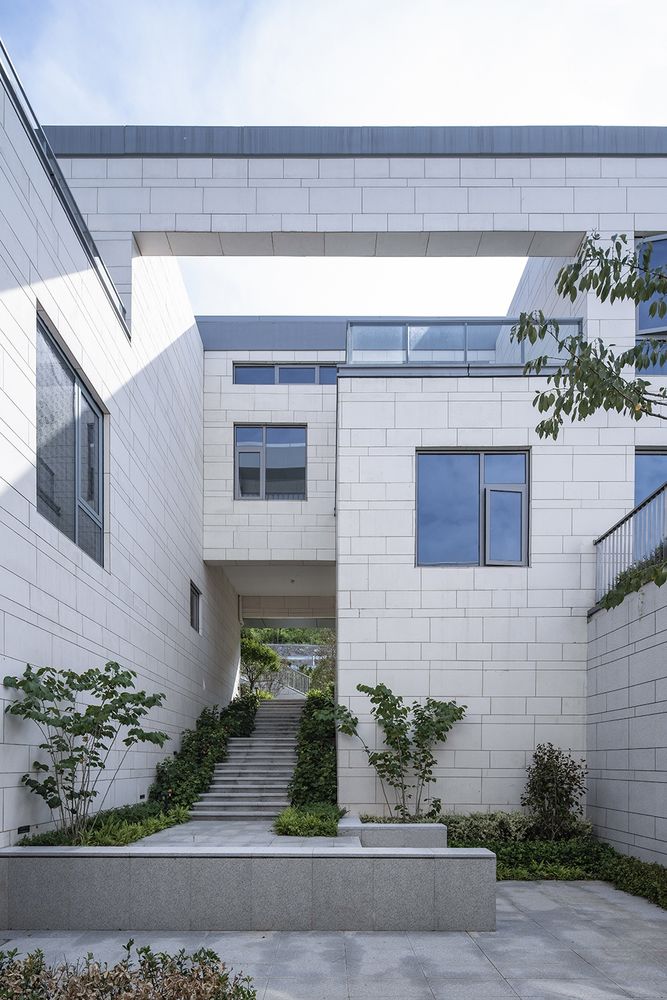
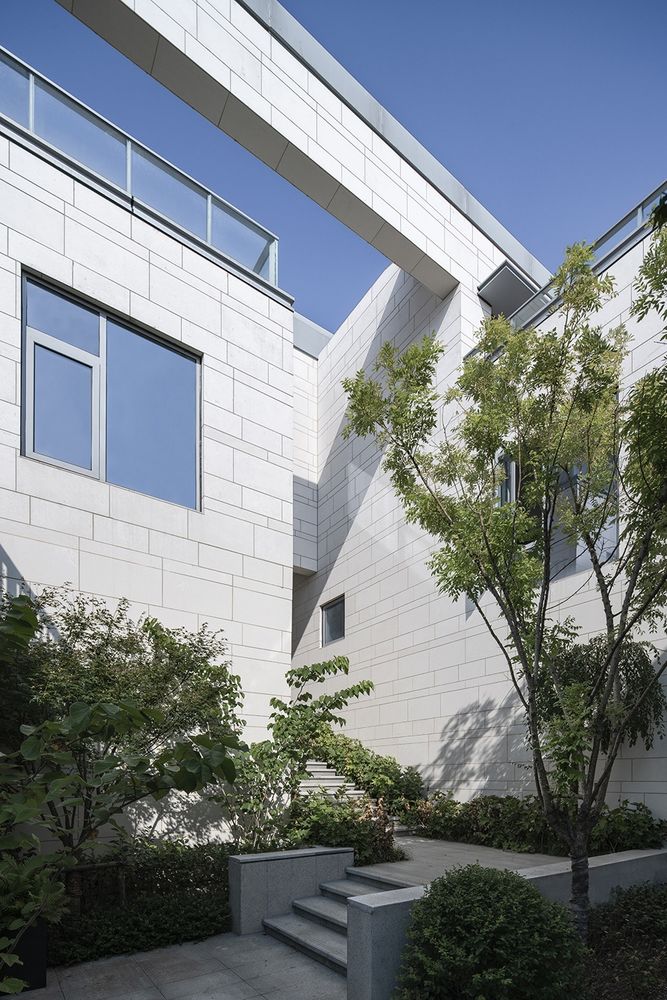
【两线一桥】以山湖观游体验为线索的动线组织
Two tracks with one connection bridge:Tracks organization based on mountain and lake sightseeing experience
在如此特别的自然环境中,人的行为必然与山湖紧密相联,如何强调这样的联系,如何安排行进的序列,也成为设计重点考虑的因素。前面提到的“山线”和“村线”就是非常重要的线索,一张一弛,互为对偶,展示出迥异的趣味。
In such a special natural environment, human behavior is bound to be closely connected with mountain and lake. So how to emphasize this connection and how to arrange the sequence also become the key factors need to be considered in design. The “mountain track” and “village track” mentioned above are very important clues. While one is in tension, another is relaxation. Just like the opposite of each other, showing different interests.
▼两线一桥,two tracks with one connection bridge

“山线”从小镇入口处开始,顺应山势往上,而后在三村交界处穿行,形成曲折蜿蜒的路径体验,与地形有机结合,打造错落起伏的景观游线;“村线”在茶亭市集处与山线重合,迅速消解高差而后在三村之中水平穿行而过,充分结合建筑组团的使用需求形成平缓开敞,高效舒适的办公商线。
The “mountain track” starts from the entrance of town, then goes up with the mountain trend, finally passes through the sharing border of three villages, forming a winding path experience. It also organically combining with the terrain to create a random fluctuation sightseeing route. The “village track” coincides with the “mountain track” at Chating Market, quickly eliminates the elevation difference. Then it passes horizontally among the three villages. This track also fully combines the using demands of the architecture groups, forming a gentle, open, efficient and comfortable business route.
▼错落起伏的景观游线,winding path experience with the terrain

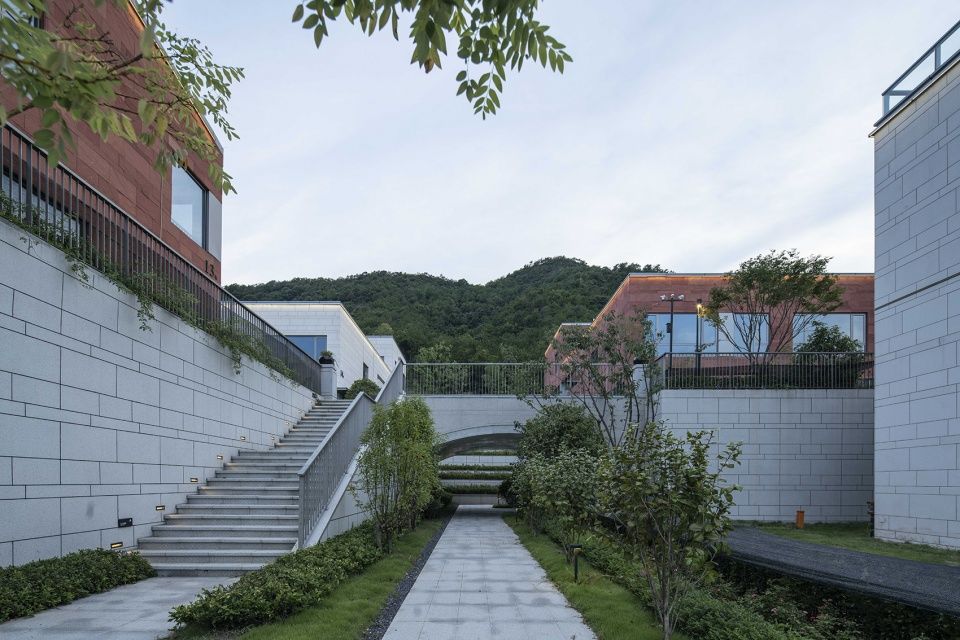
“山线”在攀爬完茶亭市集以后,开始折返于“三村”标高的最高处和最低处,山地空间的高差关系在“山线”路径上得以强化,时而舒和平缓、时而猛烈升降,尤其是和 “村线”的交汇处,形成了村与村之间的景观节点,使得相对平淡的“村线”的空间序列在150m左右则会迎来一个节奏上的突变:“山线”自“村线”连桥下方穿行而过而又攀升至高处,形成多个“望山而上,穿桥而过,回首瞰湖”的空间体验章节。而村尾处的景观小广场则为这一游一商的不同路径体验划下一个完美的共享句点。
After climbing Chating Market, the “mountain track” begins to return to both the highest and lowest elevation of the “three villages”. The elevation difference of mountain space is strengthened through the “mountain track”, sometimes gentle, sometimes sharp rise and fall, especially at the intersection with the “village track”, forming a landscape node between villages. As a result, the relatively plain spatial sequence of “village line” will experience a sudden change in rhythm, when the elevation is about 150m: when the “mountain track” passes through the “village track” under the bridge and then climbs to the height, it can provide several spatial experience sections like “watching the mountain, crossing the bridge, overlooking the lake”. At the end of the village, a small landscape square marks a perfect end to the experience of different tracks above.
▼平台形成了村与村之间的景观节点,the terrace forms a landscape node between villages
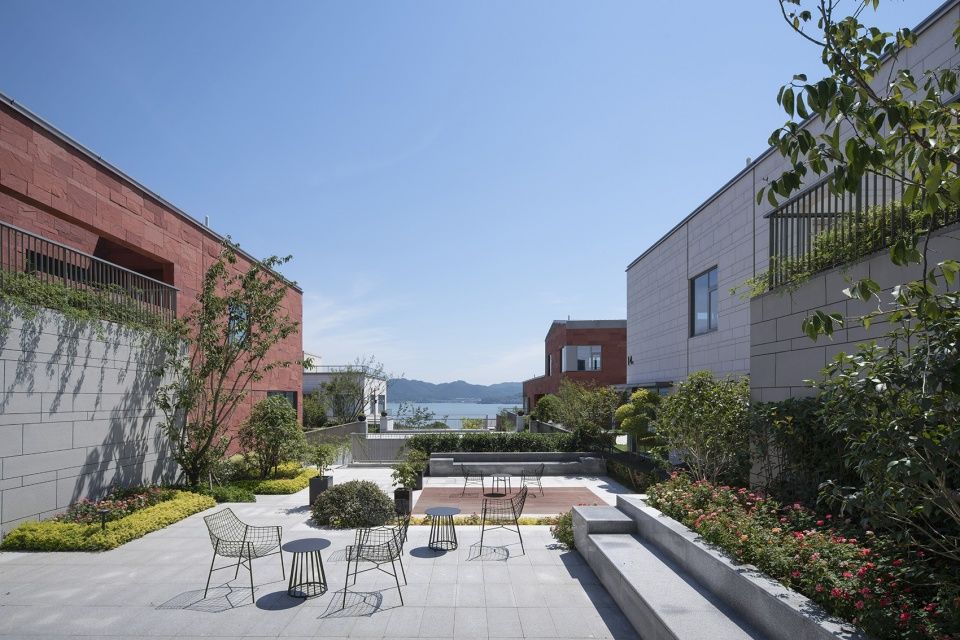
相对与城市道路接壤的茶亭市集,“村线”的水平标高距离城市道路已有24m的高差,先天的地形条件让小镇内的公共空间具有一定的私密性,便于小镇内部营造属于自己空间氛围。是以设计在“村线”两侧布置较为公共的商办空间,打造“村线”作为商业路线的空间界面, 14-18m的商业街宽度,既满足了消防要求又为两侧单元创造了一个舒适的庭院空间,提升了空间的丰富度和品质。而和“村线”稍有距离的建筑单元,则以花园办公的业态为主,更为私密又独享一片山水自然之境。
组团花园夜景,night view of the courtyard
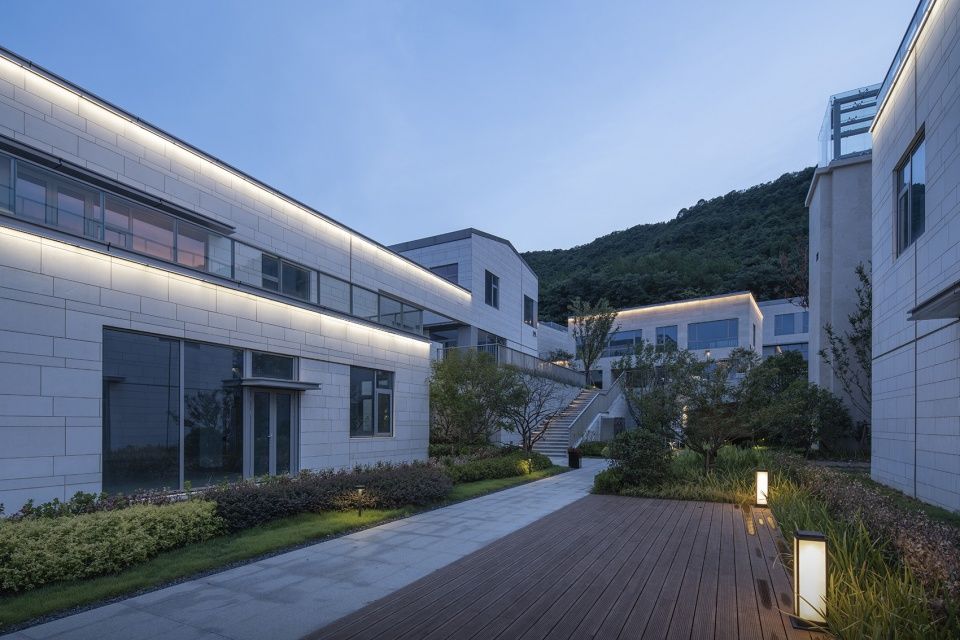
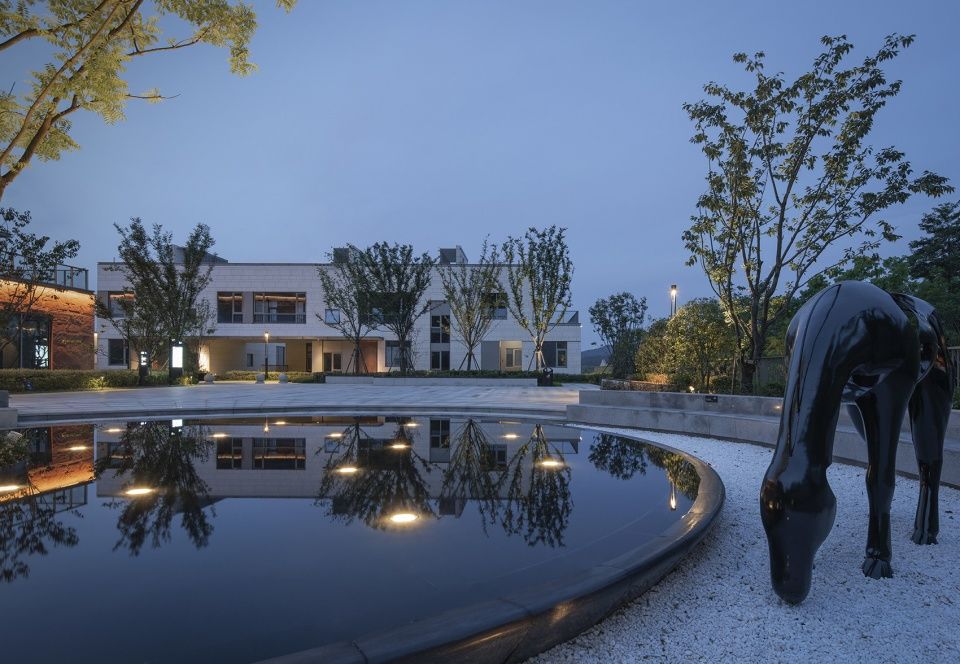
虽然有一路之隔,但建立小镇和湖岸的直接联系也是必不可少的动作,并成为观游体验的关键一环。“湖山一望醉霞迟,岸芷噙香待客时。”自茶亭市集而起,横跨环湖南路,曲折延伸至湖滨步道的连桥,被命名为“醉霞桥”。
醉霞桥造型流畅、色彩明艳,桥面流动的曲线与湖面的微波荡漾相映成趣,临湖端盘旋而下的坡道仿若一座湖边雕塑,为湖边漫步的游客标记出此间水杉林、芦苇荡中最独特的记忆锚点。
Although separated by a road, establishing a direct connection between town and lakeshore is also essential so that it plays a key part of touring experience. You can imagine a scene: “At sunset, indulge in the scenery of the mountain and lake, as birds on the shore greeting the distant guests.” A connection bridge, named as “Zuixia Bridge”, which starts from the Chating Market and stretches across South Huanhu Road, twists and turns to the Lakeside walk. Zuixia Bridge has a smooth shape and bright color. The flowing curve of the bridge deck is in contrast to the waves of the lake. The slope hovering down the end of the lake is like a lakeside sculpture, marking the most impressive memory anchor among the metasequoia forest and reeds, when tourists walking along the lake.
▼“醉霞桥”夜景,night views of the “Zuixia Bridge”
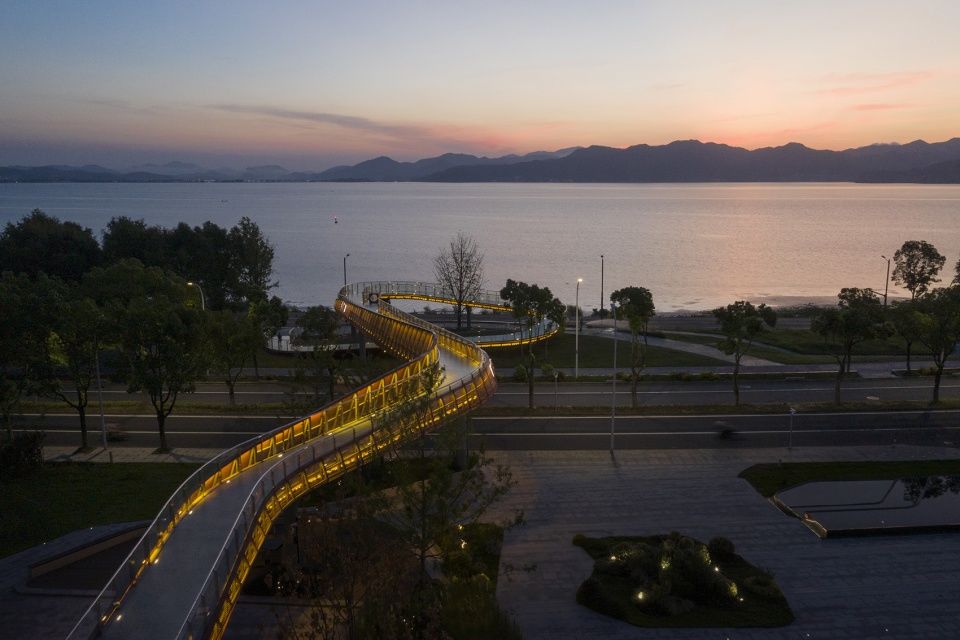

▼模型,model
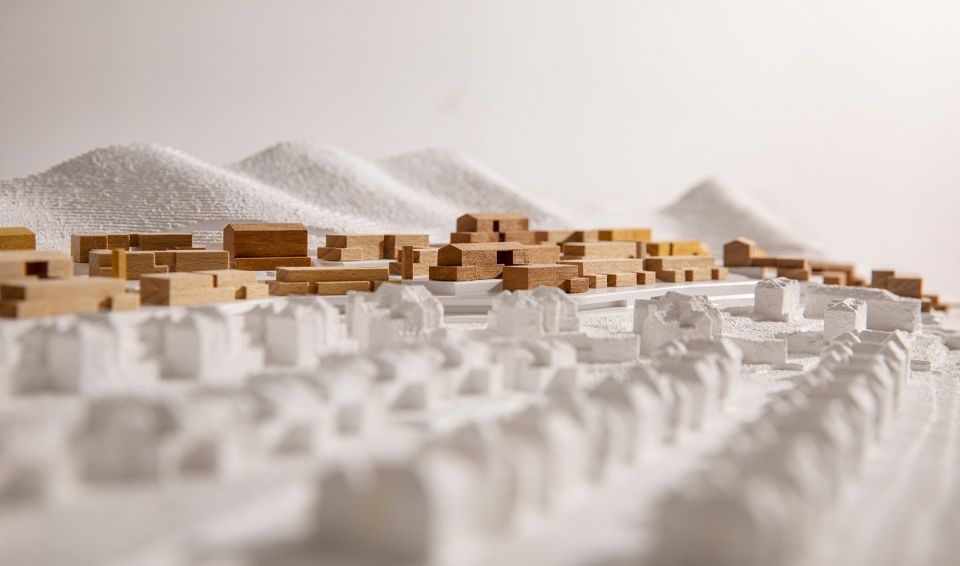
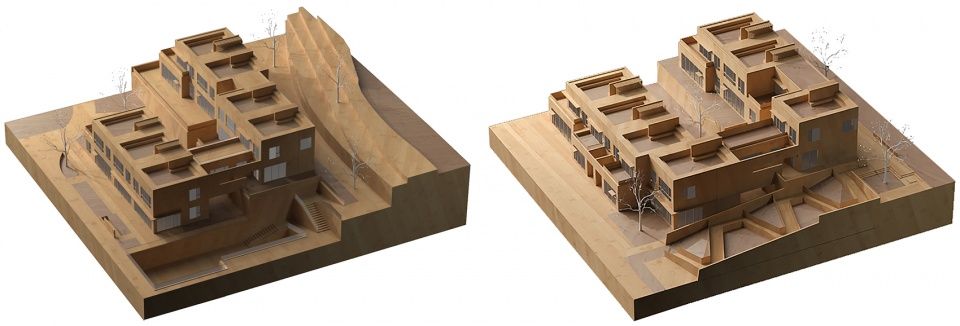
▼总平面图,master plan
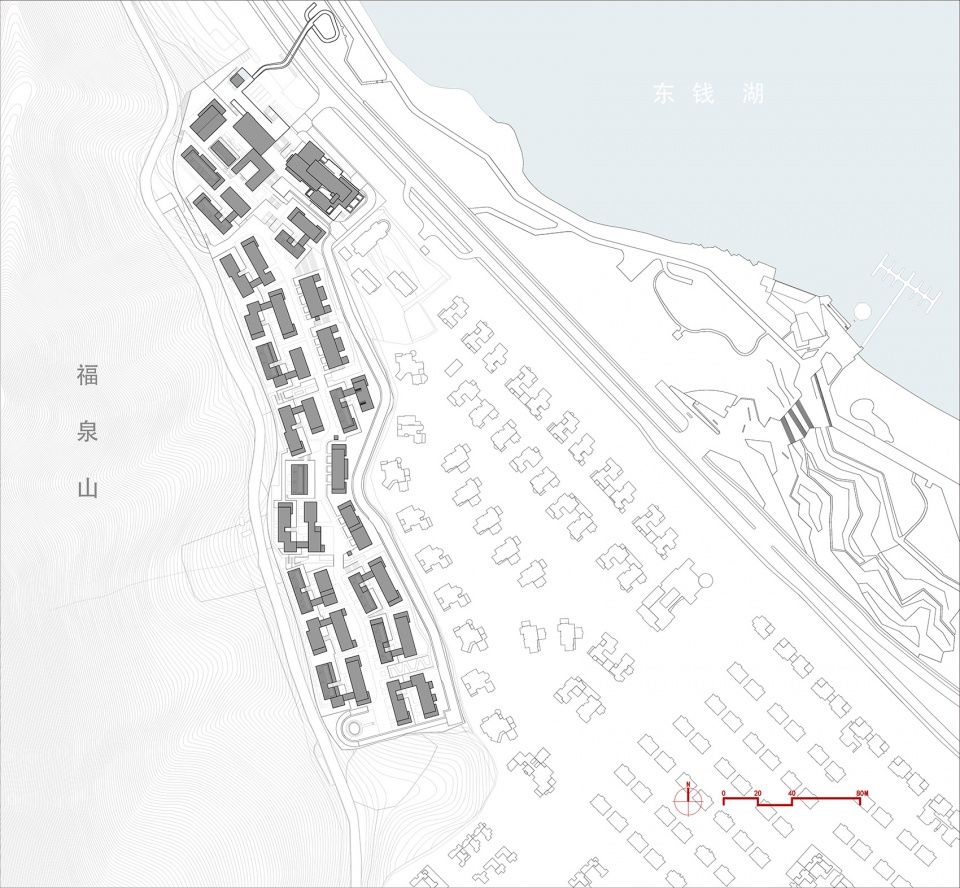
▼28.3标高平面,28.3m plan

▼32.2标高平面,32.2m plan
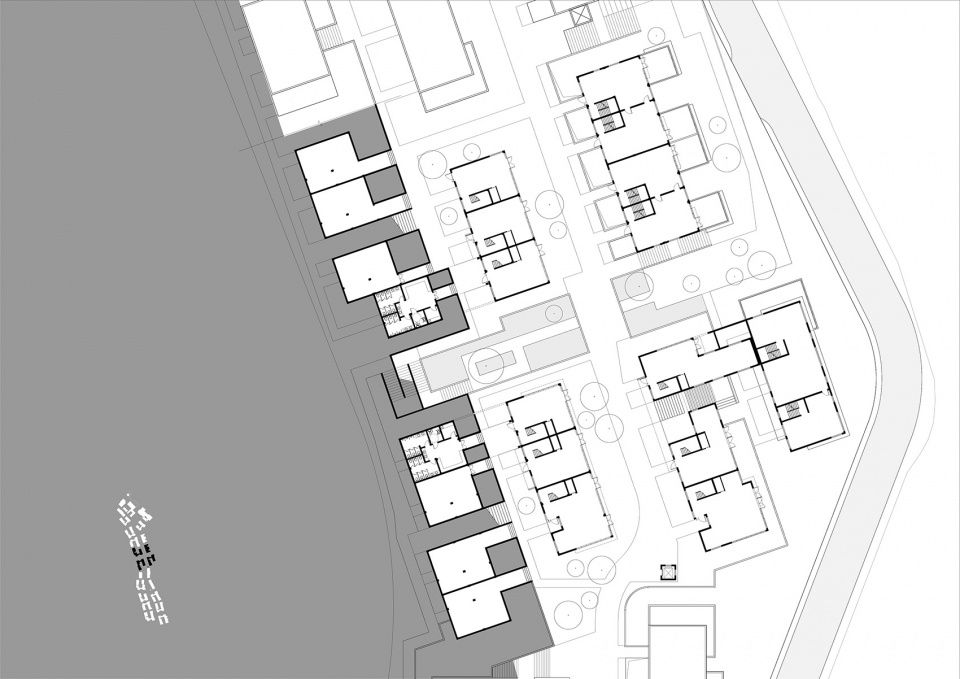
▼36.1标高平面,36.1m plan
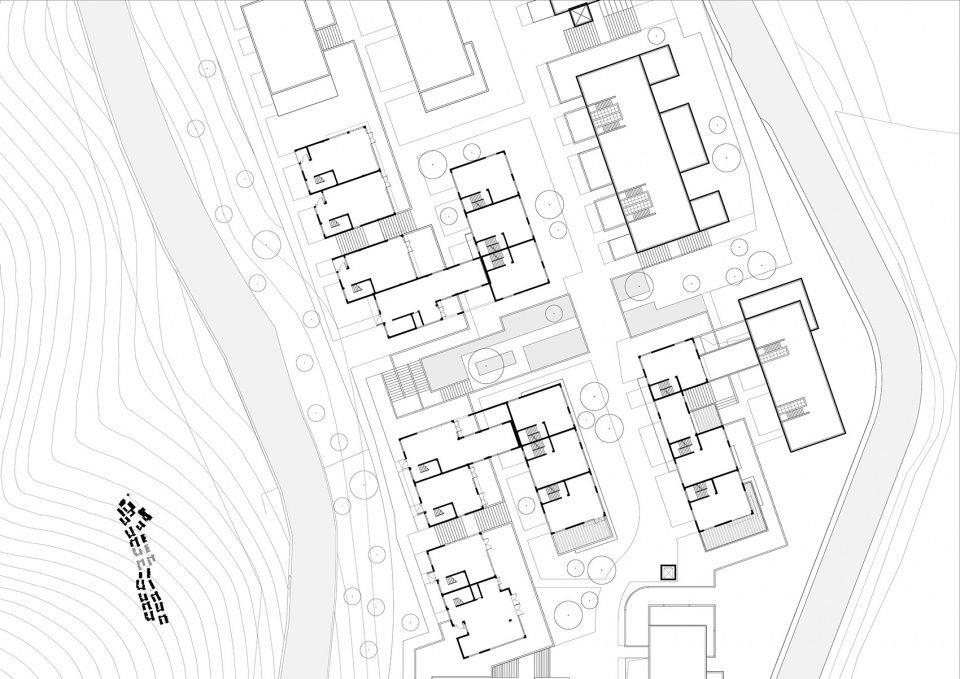
▼36.1+3.9标高平面,36.1+3.9m plan
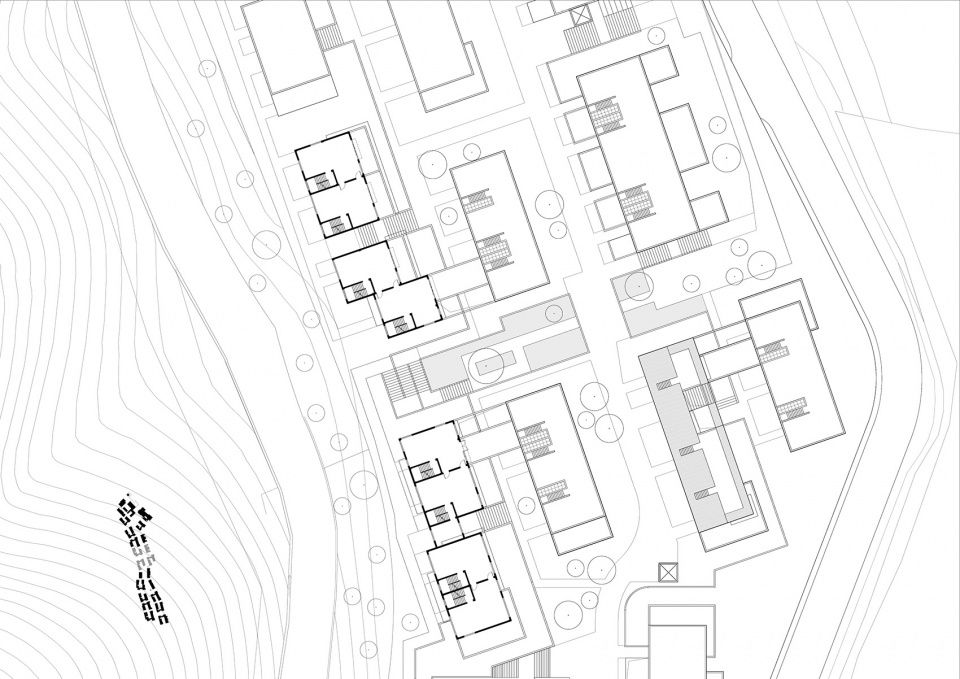
▼36.1+7.8标高平面,36.1+7.8m plan
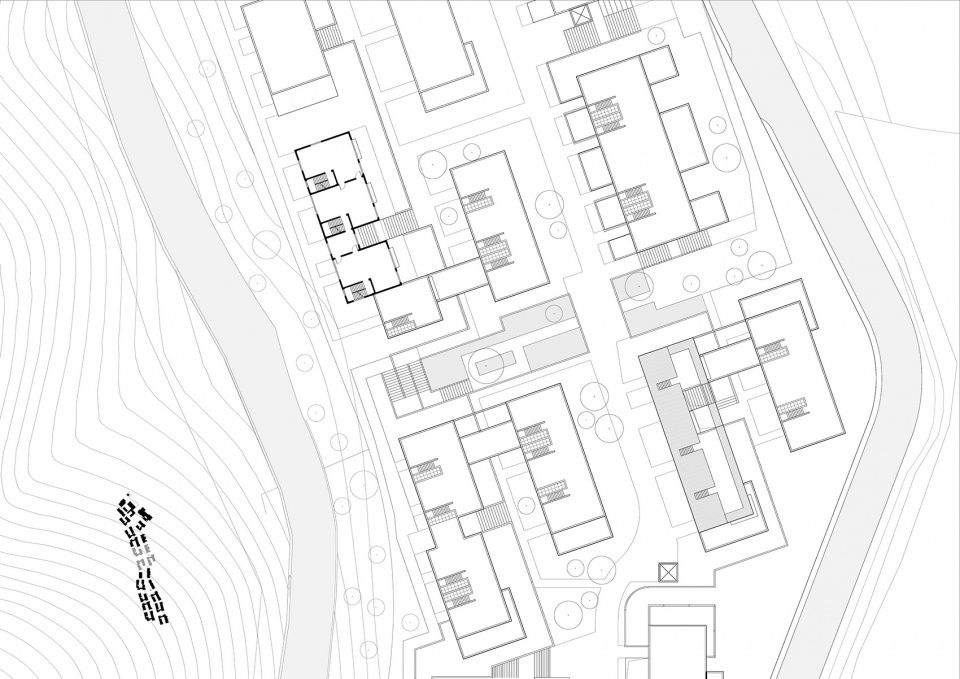
▼屋顶平面,roof plan
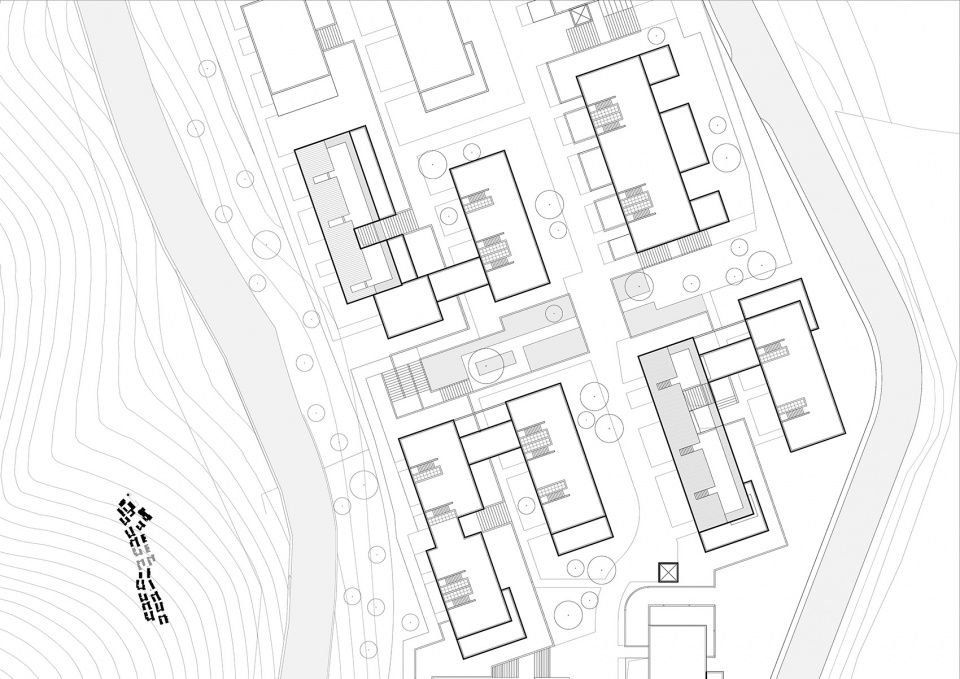
▼剖面图,section

项目名称:茶亭·自由之滨
设计方:c+d设计中心
公司网站:项目设计 & 完成年份:2019年2月-2020年9月
主创及设计团队
主持建筑师:董屹
项目主创:王斌
设计团队:魏烯醇 高阳 张小翼 黄俊瑜
项目地址:浙江省宁波市鄞州区东钱湖环湖南路666号
建筑面积:50826.5 ㎡
摄影版权:王骁、董屹、刘洋
客户:宁波东钱湖旅游度假区韩岭古村开发有限公司
Project name:ChaTing – Freedom Hill
Design:c+d Design Center
Design year & Completion Year:2019.02-2020.09
Photo credits:Xiao Wang, Yi Dong, Yang Liu


